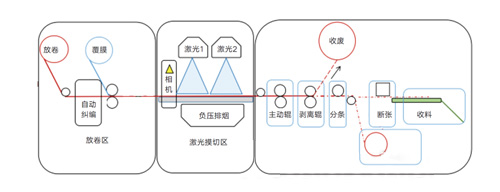Paper is the main substrate for printing, and the quality of paper directly affects the quality of printed materials. There are significant differences in the glossiness, surface strength, whiteness, absorbency, smoothness, and dimensional stability of different paper types. Even under the same printing conditions, the same ink will produce different color effects on different papers. The surface characteristics of the paper directly reflect the tonal levels and colors of the image, determining the plate-making tonal and color standards. Therefore, in practice, it is essential to fully understand the printing characteristics of paper and determine the printing parameters accordingly to enhance the quality of printed products.
Determining the Line Screen Based on Paper Performance Common line screens include 80, 100, 120, 133, 150, 175, 200, and 300 lpi. When making actual selections, the performance of the paper is a crucial influencing factor. The smoothness and roughness of the paper’s surface determine its requirements for line screen. Coated paper or high-gloss white board has a high surface smoothness and can reproduce finer dots, allowing for a higher line screen, typically set between 175–300 lpi. Uncoated paper, being rougher than coated paper, can have a line screen between 120–150 lpi. Newsprint, being even rougher, requires larger dots for printing; therefore, its line screen should be between 80–100 lpi.
Determining Black/White Areas Based on Paper Performance In the highlight areas of printed images, typically 3% to 5% of the highlights cannot be reproduced, meaning the high-light areas of the print are formed by the color of the paper. Different whiteness levels of paper affect the brightness and saturation of the main highlights, consequently impacting the color contrast of the image. The texture of the paper also plays a role; newsprint, being porous, easily absorbs ink fibers, leading to high light scattering and reduced printing density, making dark areas less black. Conversely, smooth, coated paper allows ink to adhere to the surface with minimal light scattering, producing darker tones.
The glossiness of newsprint negatively affects the color fidelity of the ink, with low surface whiteness and contrast; its smoothness is low, causing high ink diffusion, so even good quality newsprint does not exceed 133 lpi in line screen. Given these characteristics, the calibration values for black/white areas can be set, with the white area using small area screening (C=0%, M=0%, Y=0%, K=0%), and the black area calibrated to C=62%, M=Y=56%, K=75%. The total ink coverage should also be kept lower, around 250%.
Coated paper has good smoothness, whiteness, and light reflection capabilities. Ink printed on coated paper has minimal diffusion, resulting in good dot quality, and the dot gain can be controlled to around 15%. Prints on coated paper have excellent color saturation and vibrancy, showcasing good tonal depth and contrast. Highlights can reproduce dots as small as 2%, and the total ink coverage for darker tones can reach around 340, with a line screen exceeding 200 lpi, achieving a density contrast of 1.8. For coated paper, some manufacturers set the white area dot value at C=95%, M=Y=3%, which relates to the smallest dots achievable during plate exposure and printing. The black area calibration is approximately C=95%, M=Y=85%, K=75%.
It should be noted that if there are no highlight dots in the image, the paper color can be used as a reference point for adjusting the white area, ensuring that each color dot in CMYK remains below 3%.
Determining Color Separation Parameters Based on Paper Performance
- Compensation for Dot Gain: When ink is transferred to the paper surface under pressure, it diffuses due to the paper’s absorbency, resulting in dot gain that darkens the image. Different paper qualities yield different levels of dot gain, with newsprint having the highest and coated paper the lowest. Dot gain typically follows an exponential pattern, necessitating compensation in prepress processing.
For different sizes of dots, the dot gain value varies. Generally, highlight and dark tone dots have lower gain, while midtones have higher gain. It is recommended to use default settings, with coated paper having a default of around 17%, uncoated paper at 22%, and newsprint at 30%.
Explore our book printing services on the Printing in China page.
-
Choosing Color Separation Types (GCR, UCR): Using GCR helps maintain gray balance, reduce total ink coverage, and speeds up drying. The quality of the black plate is crucial in printing; for standard originals, GCR is recommended. For special originals with rich mid and dark tones, UCR can also be used. Flexibility is key.
-
Total Ink Coverage Settings: The printing characteristics of the paper, along with the high speed of web printing, dictate that total ink coverage cannot be too high. International data shows that total black coverage for newsprint is generally controlled at 240%–260%; for coated paper, it is 280%–320%; and for uncoated paper, 300%–340%. These values depend on various processes and are influenced by dot gain. If dot gain is severe, this value should be reduced; otherwise, darker tones may lose detail. If dot gain is normal, the value can be increased to ensure rich color saturation and adequate tonal representation across the spectrum. Additionally, the appropriate ink should be selected based on the paper type.

Comments
No comments yet. Be the first to react!